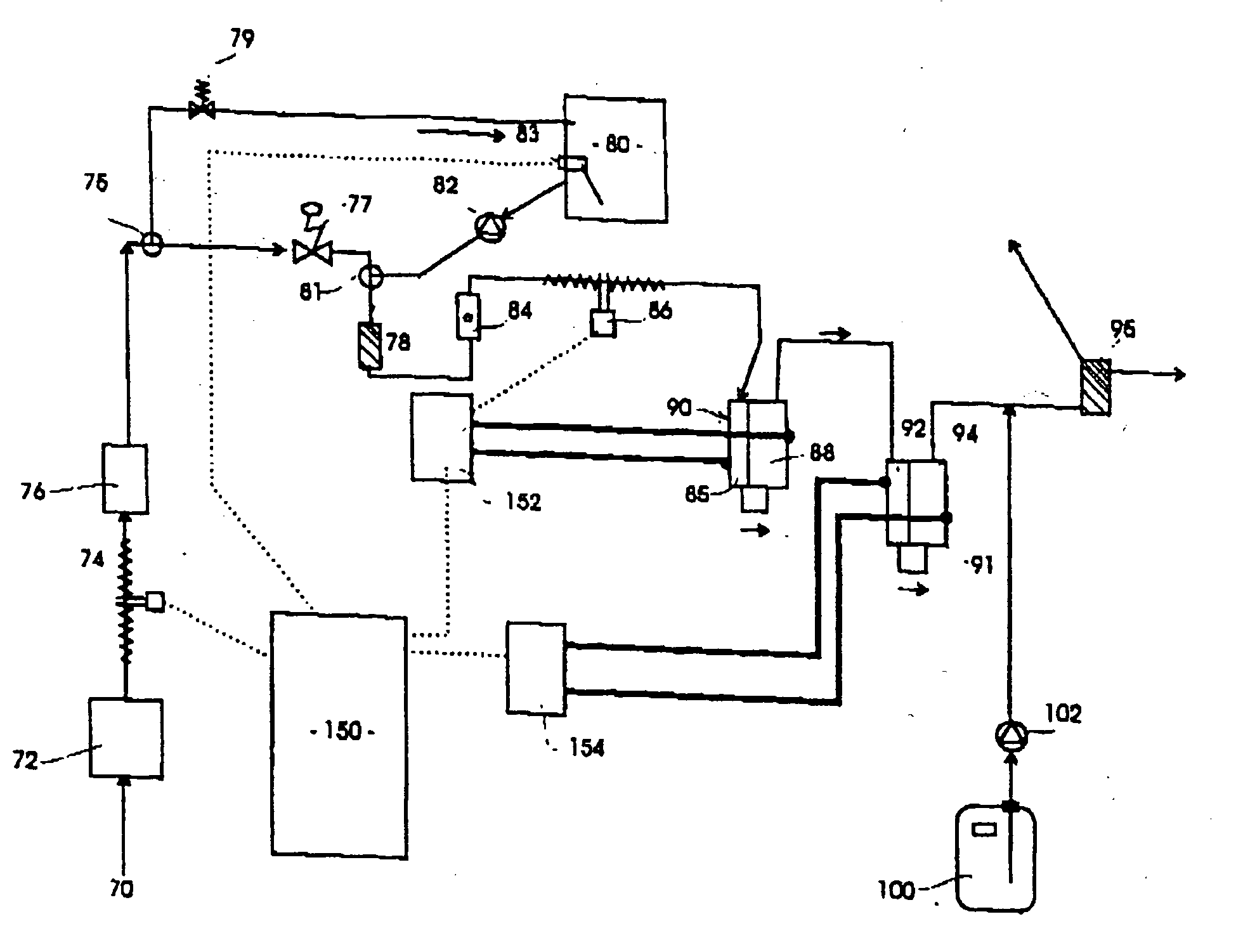End cap for an electrolytic cell
- Summary
- Abstract
- Description
- Claims
- Application Information
AI Technical Summary
Benefits of technology
Problems solved by technology
Method used
Image
Examples
Embodiment Construction
[0067] Referring first to FIGS. 1 and 2, a cylindrical electrolysis cell generally indicated by 10 comprises an outer cylindrical anode 12 enclosed on its outer surface by a cylindrical protective and insulating sleeve 14. This electrode is preferably made of titanium, coated on its inner surface with a transition metal oxide coating as described above. An inner cylindrical cathode 16, also preferably made of titanium and with a transition metal oxide coating on its outer surface, is arranged co-axially within the cylindrical anode, and a cylindrical ion-permeable membrane 18 is arranged co-axially between the electrodes in such a way as to define a space 20 between the anode and the membrane, which in use acts as an anolyte compartment, and a space 22 between the membrane and the cathode, which in use becomes the catholyte compartment.
[0068] The ion-permeable membrane 18 is preferably a ceramic membrane, and is suitably made from allumina.
[0069] An insulating end cap 23 is provid...
PUM
| Property | Measurement | Unit |
|---|---|---|
| Diameter | aaaaa | aaaaa |
| Permeability | aaaaa | aaaaa |
| aaaaa | aaaaa |
Abstract
Description
Claims
Application Information
 Login to View More
Login to View More - R&D
- Intellectual Property
- Life Sciences
- Materials
- Tech Scout
- Unparalleled Data Quality
- Higher Quality Content
- 60% Fewer Hallucinations
Browse by: Latest US Patents, China's latest patents, Technical Efficacy Thesaurus, Application Domain, Technology Topic, Popular Technical Reports.
© 2025 PatSnap. All rights reserved.Legal|Privacy policy|Modern Slavery Act Transparency Statement|Sitemap|About US| Contact US: help@patsnap.com



